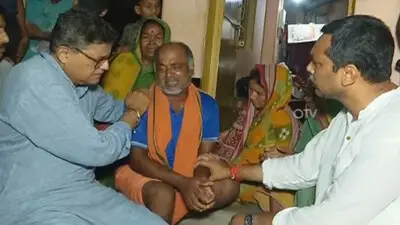Recommended Stories
Bhubaneswar: Chief minister, Naveen Patnaik seems to be fighting the toughest battle of his entire political career in these elections which would be the true test of his popularity with anti-incumbency factor visible across the state. In the past the ruling Biju Janata Dal (BJD) used to boast about Odisha bucking the anti-incumbency trend and rather coining a new term, ‘pro-incumbency’. Such was the popularity of Patnaik, claimed BJD leaders.
But any such talk this time would be promptly dismissed as an empty boast because popular discontent against the government is visible across constituencies. The outcome of the contest, though, would ultimately depend upon how strong is this anti-incumbency factor and how prepared the opposition, mainly the BJP, is to take advantage of the under-current of dissatisfaction against the Naveen Patnaik regime.
Travelling through a vast area stretching from Ganjam to Bhawanipatna via Koraput and Nabarangpur I found the anti-incumbency factor visible everywhere. Wonder of wonders I found people complaining even about not having received a single instalment of money under the KALIA scheme, the government’s flagship programme for the farmers.
At Pottangi bus stand in Koraput district I met a bunch of farmers complaining about it. I think chief minister’s campaign promise of releasing the KALIA money immediately after being voted back power is targeted at this disgruntled section of farmers.
Apart from Berhampur Lok Sabha constituency, where the BJD seems to be breathing easy despite factors like distress sale by tomato farmers and the continuing water woes of Berhampur town what with Congress and BJP having put up rather weak candidates, the ruling party would find the battle tough in the three other Lok Sabha constituencies going to the polls in the first phase.
Significantly, all the three constituencies—Koraput, Nabarangpur and Kalahandi—are part of state’s notoriously underdeveloped KBK belt which used to report incidents of starvation, malnutrition deaths and child sale almost regularly in the 80s. To be fair to the present government things have changed for the better in this belt but many grievances of the people still remain unaddressed causing resentment. For example healthcare system in the above mentioned three constituencies leaves much to be desired with the nearest primary health centres in some cases being as far as 10 kms from villages.
In Nabarangpur farmers appeared to be angry over the low minimum support price (MSP) of paddy with their counterparts in the neighbouring Chhattisgarh getting much higher prices. The farmers also complained about distress sale with state government officials at the “ mandis” harassing them in various ways. Besides the state government is yet to set up a single ‘ mandi’ for the purchase of maize which is a major cash crop in Nabarangpur.
One heard similar complaints from farmers even in Kalahandi which also has trade links with neighbouring Chhatisgarh. People in Kalahandi and Nabarangpur are also aggrieved about lack of industries in their areas. While Kalahandi has at least one major alumina refinery at Lanjigarh, Nabarangpur has no industry at all. The only plywood factory that the district had is lying closed.
The litany of popular complaints is long. The anger slowly building among the people may cost the ruling party dear this time.
(DISCLAIMER: This is an opinion piece. The views expressed are author’s own and have nothing to do with OTV’s charter or views. OTV does not assume any responsibility or liability for the same)













